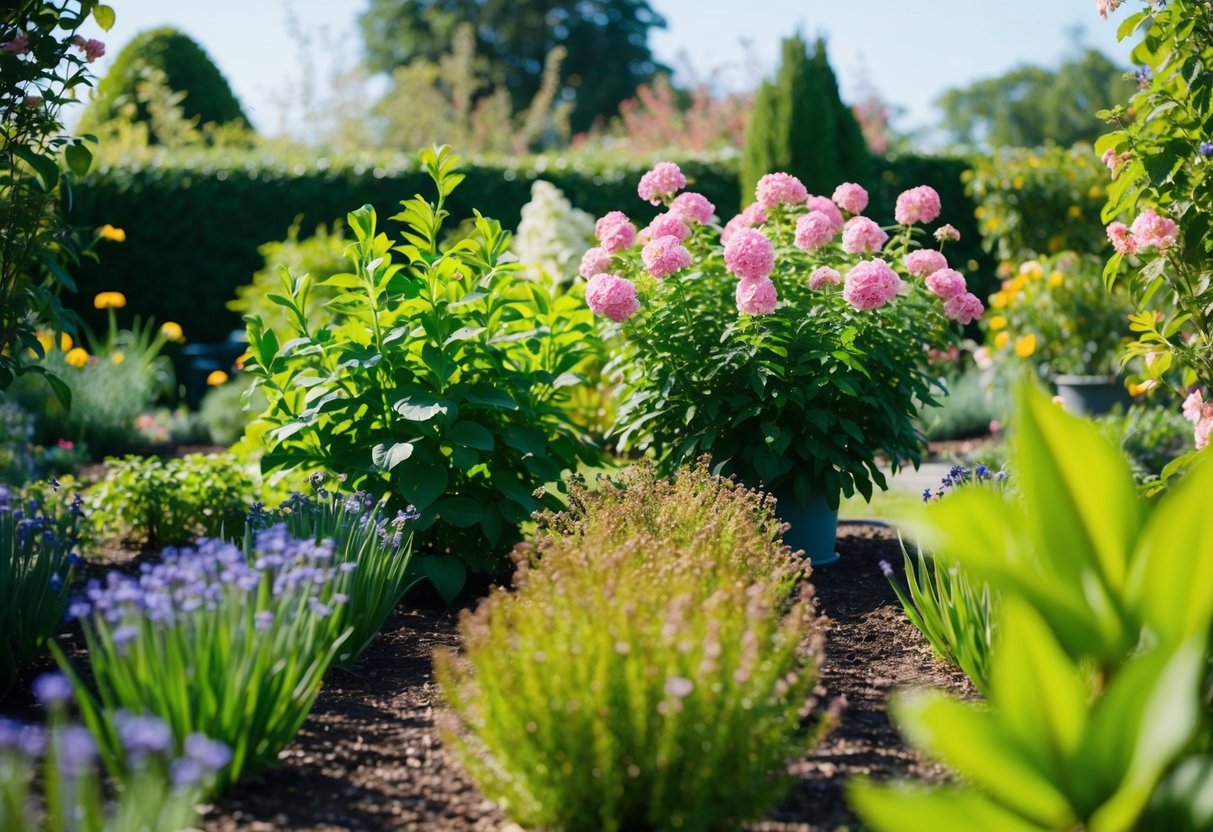
Autumn Gardening Preparations
As the leaves begin to change, it’s time to focus on adding plants that thrive in cool weather while getting ready for the colder months ahead. Incorporate vibrant autumn planting choices and ensure your garden is well-prepared for winter.
Planting for Autumn Beauty
Autumn is an excellent time to introduce plants that offer vibrant colors. Chrysanthemums, also known as mums, are popular choices due to their range of colors and compatibility with autumn temperatures. They add beauty to garden borders and containers alike.
Pansies, with their cheerful faces, endure cool weather and provide color through late autumn. Ornamental kale and cabbage introduce texture and unique foliage. These frost-resistant plants can withstand the chill and bring vivid visual interest to the garden.
It’s essential to plant bulbs like daffodils and tulips during this season for spring blooms. Their roots establish well in cooler soil, setting the stage for vibrant displays after winter. Autumn planting ensures a continuous cycle of color and life in the garden.
Preparing for Winter
Preparing for winter involves protecting existing plants and enhancing soil health. Start by removing dead or diseased plants to prevent pests and diseases from overwintering. Clean up fallen leaves and debris around plants to avoid rot.
Mulching is crucial. A thick layer of mulch insulates plant roots and regulates moisture, preventing soil erosion from winter rains. This is particularly important for perennials and young plants. Prune perennials and shrubs to maintain shape and remove damaged branches.
Consider adding a layer of compost to improve soil fertility. This adds nutrients, helping plants survive the winter and recover vigorously in the spring. Covering delicate plants with burlap or garden fabric can offer additional protection against harsh weather conditions. Proper winter preparation ensures a healthy garden come spring.
Winter Gardening Strategies
During winter, gardeners can still maintain vibrant outdoor spaces by protecting existing plants and exploring the cultivation of cold-hardy vegetables. These strategies can ensure that the garden remains productive and resilient even under harsh conditions.
Protecting Plants from the Cold
To protect plants from extreme cold temperatures, mulching is essential. By insulating the soil, mulch helps retain moisture and regulate temperature fluctuations. Gardeners should cover the base of perennial plants with a thick layer, typically using straw or shredded leaves. For potted plants, moving them closer to the house or into a sheltered location can prevent damage from freezing winds.
Row covers and frost blankets are effective for shielding more delicate plants. They provide a protective barrier without suffocating the plants. Wrapping trees and shrubs with burlap can guard against winter burn, a common issue caused by cold winds and sun exposure. Regular watering throughout winter, when possible, is crucial. Despite lower temperatures, plants can dehydrate quickly due to dry air and lack of precipitation.
Growing a Winter Vegetable Garden
Cold-hardy vegetables are perfect for a winter vegetable garden, thriving in chillier climates where other species might fail. Varieties like kale, spinach, and Brussels sprouts withstand frost and continue to produce yields. Planting these in raised beds can improve drainage and soil warmth.
Using cold frames or unheated greenhouses extends the growing season, protecting young plants from severe weather. Gardeners can also invest in high tunnels or hoop houses that serve as temporary, low-cost greenhouses. These structures capture solar energy, maintaining a warmer micro-environment. Preparing the soil with compost rich in nutrients supports healthy growth in less favorable conditions. Starting seeds indoors and then transplanting them ensures a head start when outdoor conditions are less predictable.